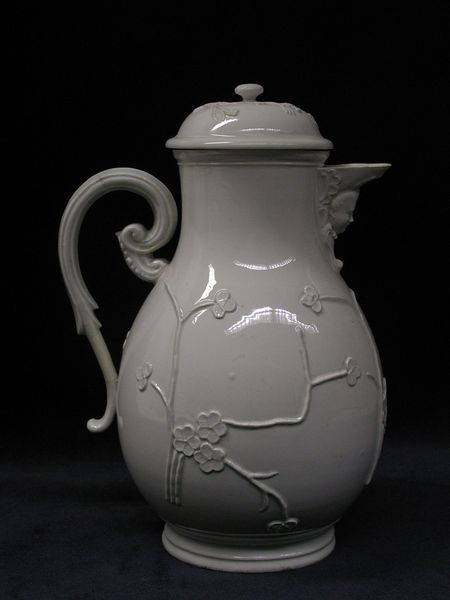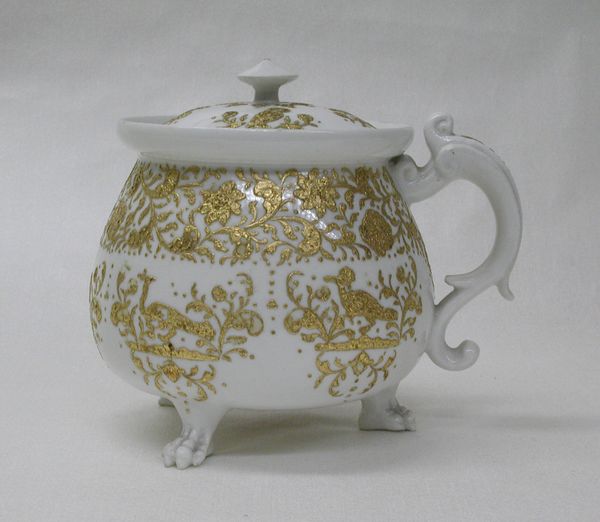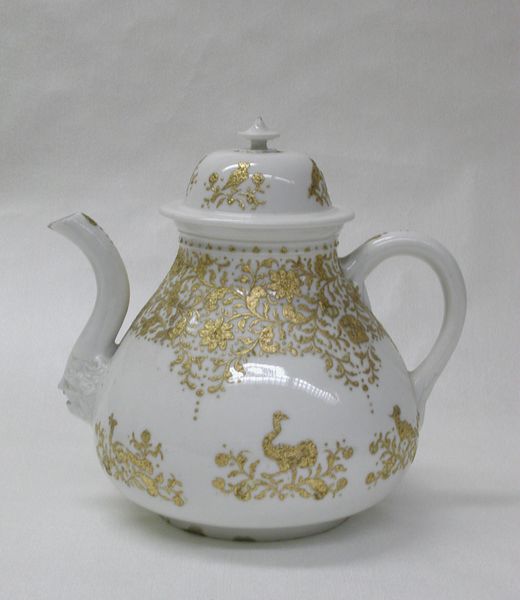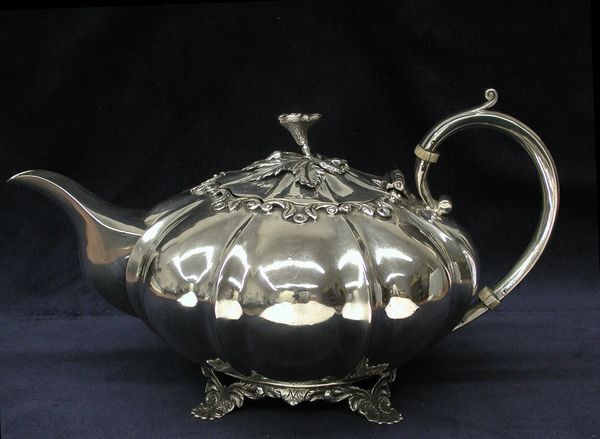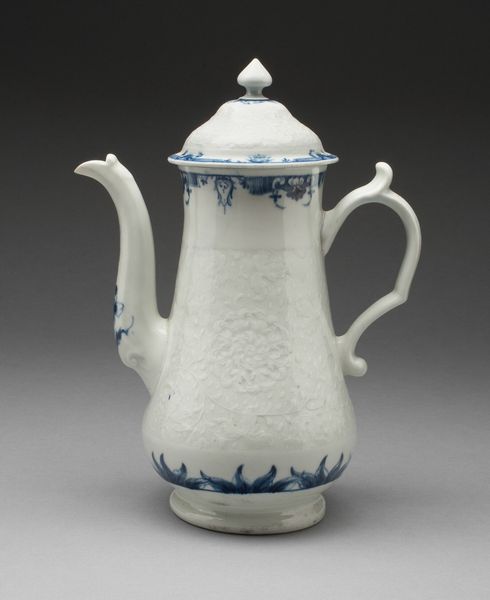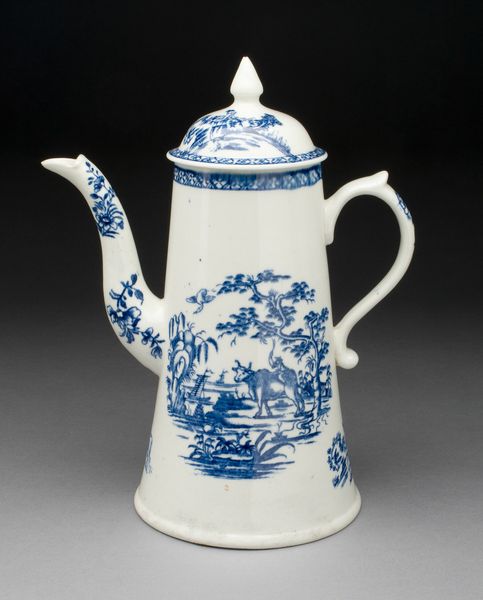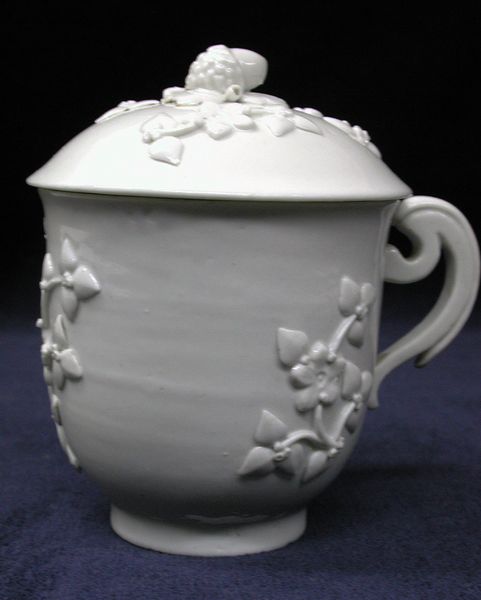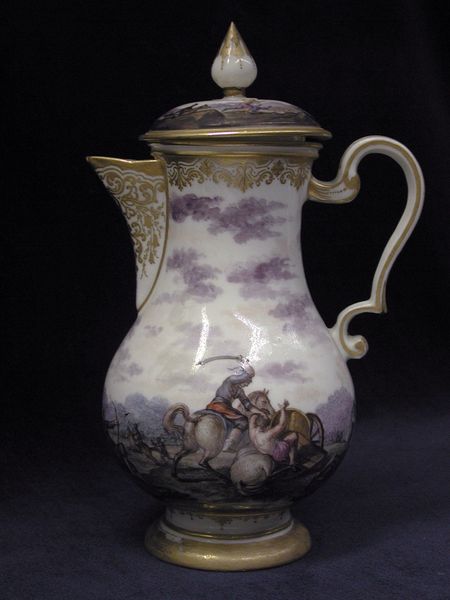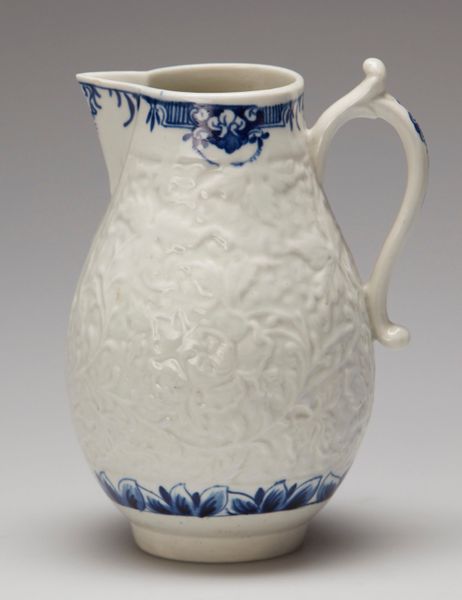
ceramic, porcelain, sculpture
#
baroque
#
ceramic
#
porcelain
#
sculpture
#
ceramic
#
decorative-art
Dimensions: Height (without cover): 8 1/2 in. (21.6 cm); Height (with cover): 10 1/4 in. (26 cm)
Copyright: Public Domain
Editor: We're looking at a porcelain coffeepot made around 1740-1750 by the Capodimonte Porcelain Manufactory. It’s a lovely, simple shape. All white, and it feels so delicate! What does it tell us about the time it was made? Curator: This seemingly simple coffeepot speaks volumes about the socio-cultural landscape of 18th-century Europe. Porcelain production was heavily tied to royal patronage and international trade, so this coffeepot reveals something about the distribution of luxury goods. Its very existence highlights the increasing demand for, and the public role of, previously exclusive commodities like coffee. Who could afford something like this and in what context would they display it? Editor: So, owning this object, even just displaying it, had social and political significance? Curator: Absolutely! Consider the Baroque style: its flowing lines and elegant handle aimed to project wealth and sophistication. Capodimonte was a royal factory, meaning this wasn’t mass produced; it signifies status. Think about how this porcelain body was used to shape and control perceptions. This coffeepot can be analyzed through those layers of historical narratives. Editor: It’s fascinating how something so everyday can be seen through such a wider historical lens. Curator: Precisely. And the coffeepot, while seemingly simple, served as a political instrument, shaping cultural practices and public perceptions of wealth and power. I find the intersection of decorative art and socio-political commentary particularly rewarding, what about you? Editor: I now appreciate how objects can offer insights beyond aesthetics! I will never look at pottery the same way.
Comments
No comments
Be the first to comment and join the conversation on the ultimate creative platform.
